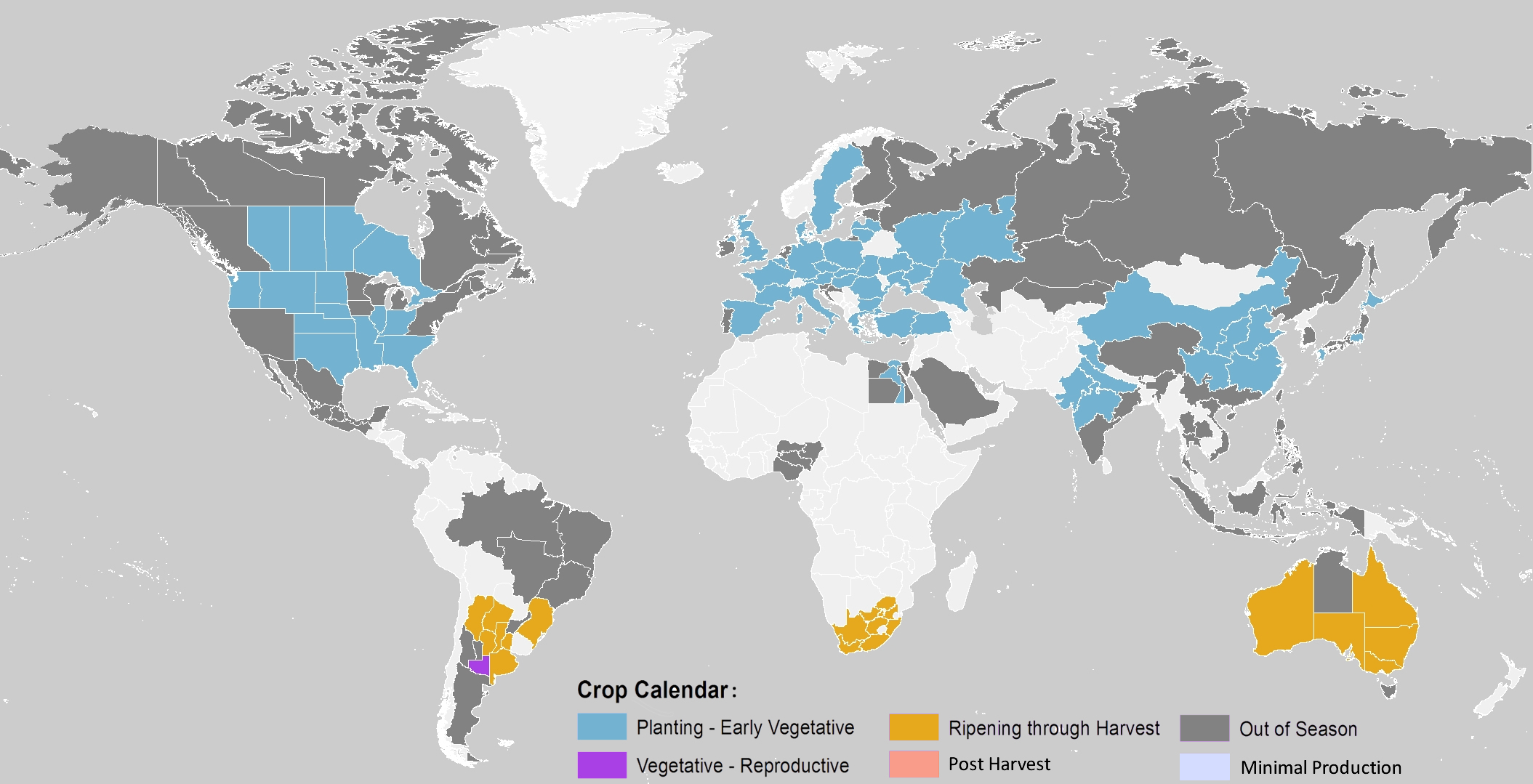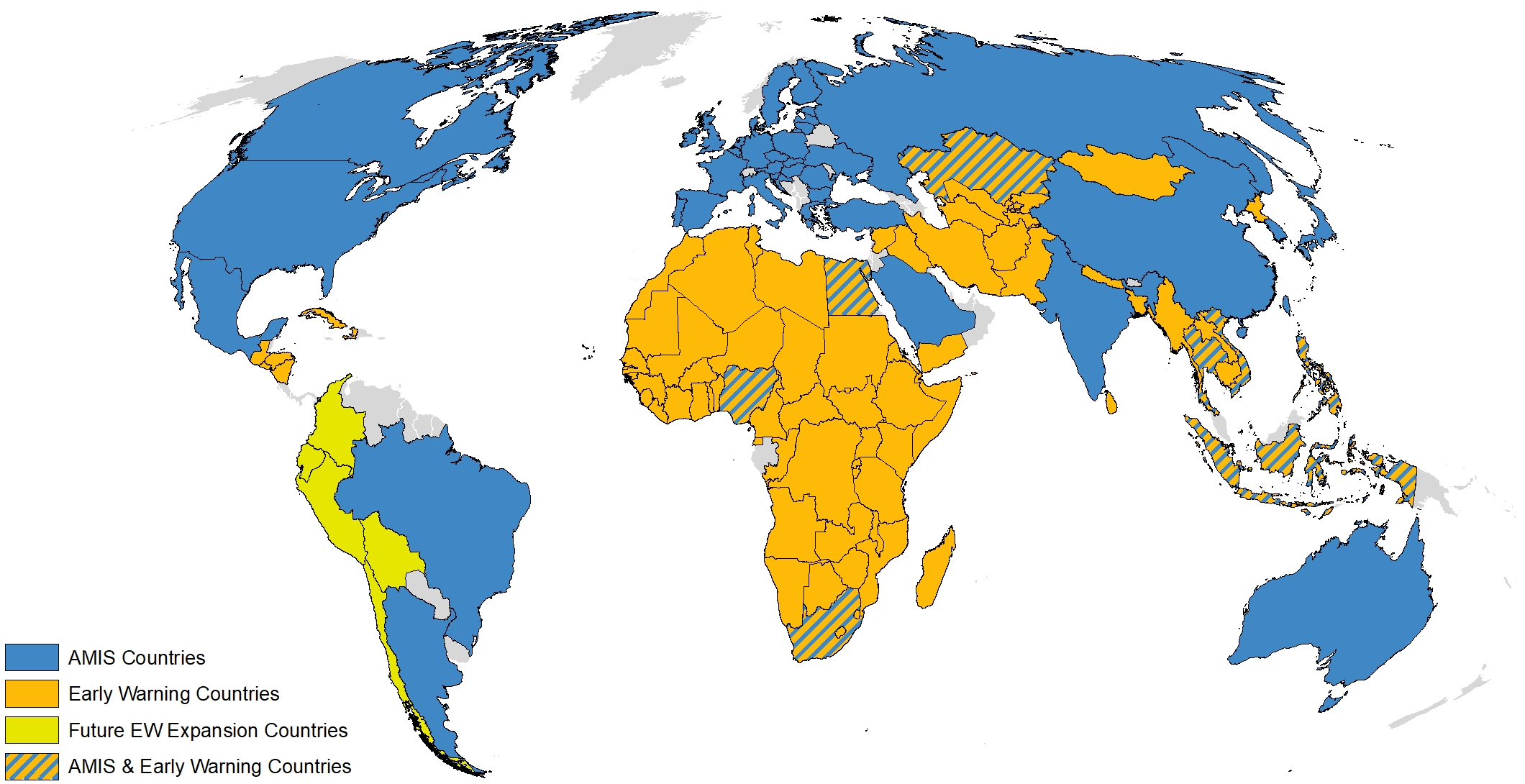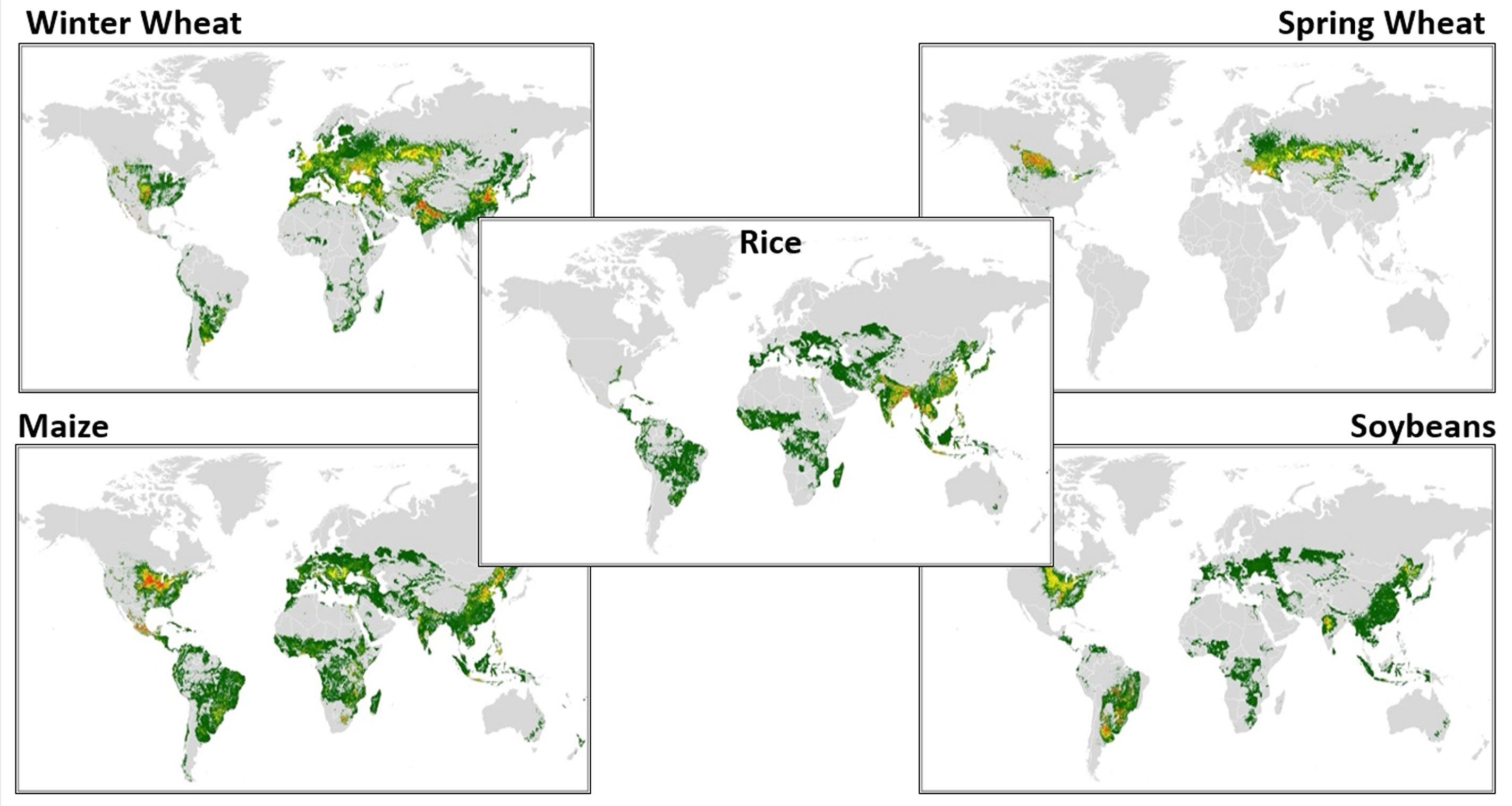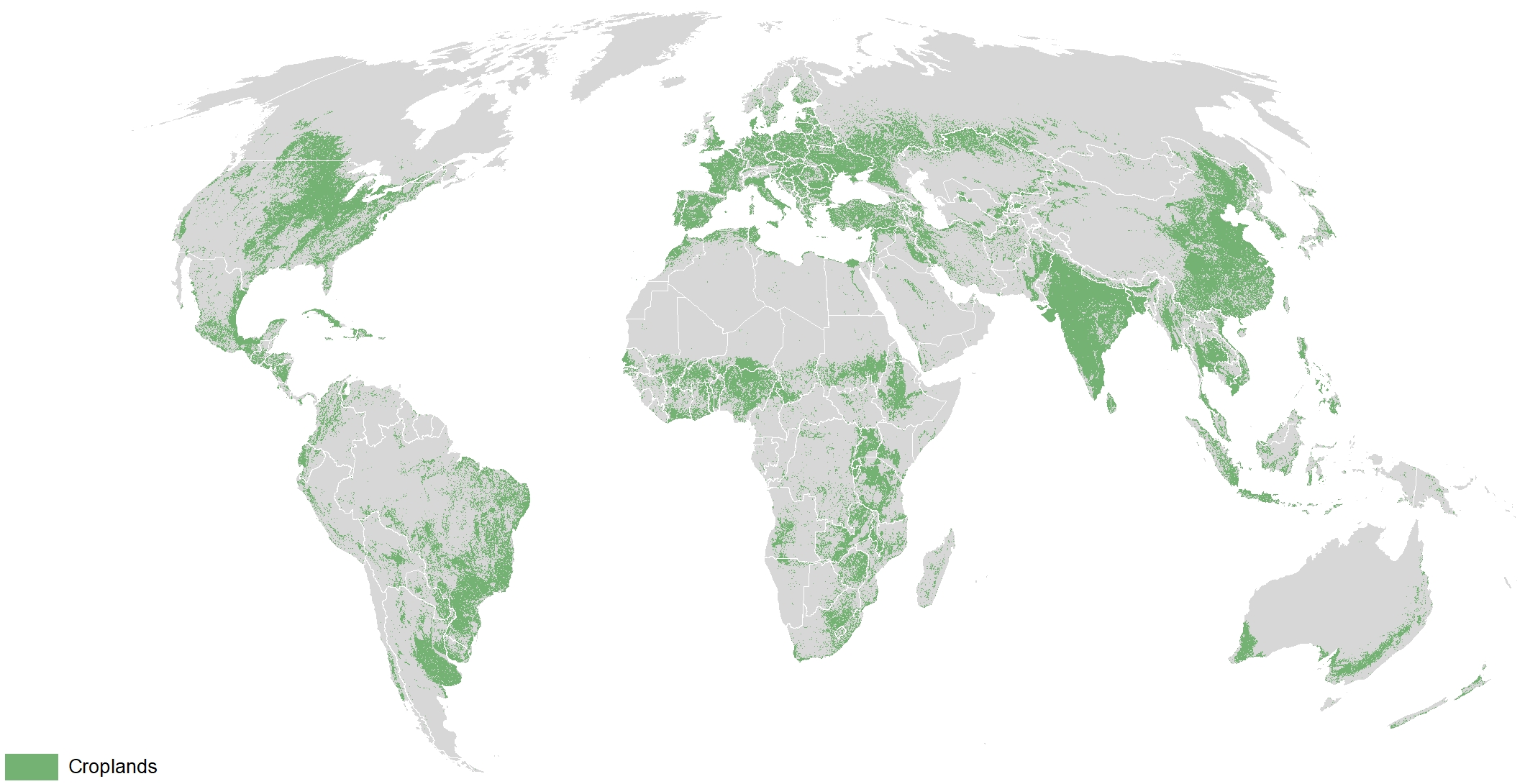Baseline Data
The Sub-National Crop Calendars
The Crop Monitor sub-national crop calendars are based on a combination of the best available data from different international agencies, national ministries, and expert knowledge from country partners. For the Crop Monitor for AMIS sub-national calendars, the USDA Major World Crop Areas and Climatic Profiles was used as a base to create the crop calendars at the national level. The Crop Monitor for Early Warning sub-national calendars used FAO GIEWS, FEWS NET, and national ministries as a base to create the crop calendars at the national level. Then for both Crop Monitors, each country was broken down into sub-national regions through the combination of agro-ecological zones, administrative level 1 FAO GAUL units, production statistics, and national partner inputs. The sub-national regions are each an aggregation of administrative FAO GAUL level 1 units or in some cases the administrative level 1 units themselves.
In order to provide a finer detailed product, the crop calendars are displayed in bi-monthly time steps. The crop calendars consist of five different phenological phases/stages which are broadly applicable across most crops.
- Planting through Early Vegetative*
- Vegetative through Reproductive
- Ripening through Harvest
- Harvest (End of Season)
- Out of Season
*Planting through Early Vegetative includes the dormancy stage of winter wheat where applicable.

Winter wheat stages across AMIS countries in the second half of November
While most crop calendars at the national level identify the planting and harvesting phases, the Vegetative through Reproductive and the Ripening through Harvesting phases were added in order to enable analysts to evaluate crop conditions during critical crop development phases which are related to final yields. The added phonological phases enriched the Crop Monitor reports in the context of outlooks for production.
The crop calendars are divided into different cropping seasons where there are multiple cycles of a crop (e.g. winter wheat and spring wheat are differentiated). For the countries that have multiple cycles, the calendars are aligned to display the largest producing cycle as the “first” crop and the smaller producing cycle(s) as the second or third crop depending on production, as displayed in below Crop Season Nomenclature table.
These crop calendars are continually being refined as Crop Monitor partners compile improved information from a variety of satellite and in situ sources, and as Crop Monitor methodologies (e.g. administrative unit sizes) are revisited and altered in line with both end-user needs and evolving scientific understanding of global croplands dynamic. For the purposes of the crop calendar releases, they shall be done on versioning bases with accompanying notes to track the changes between versions.
Crop Monitor for AMIS Calendars
Calendars cover the multiple seasons of the four AMIS crops of wheat, maize, rice and soybeans across AMIS countries. Calendars per crop are only in countries and sub-national regions where the crop has a major contribution towards global or national totals.
Download Data Coming soon
Crop Monitor for Early Warning Calendars
Calendars cover the multiple seasons of maize, millet, sorghum, wheat, teff, rice, and beans across Early Warning countries. Calendars per crop are only in countries and sub-national regions where the crop is a major food security staple for the country or region.
Download Data

Crop Monitor for AMIS
In the process of developing the Crop Monitor for AMIS, a need for global crop crop-specific masks was identified in order to accurately monitor the four main AMIS crops (maize, wheat, soybeanrice, and ricesoybean). As our base layer, we chose the physical area layers from the Spatial Production Allocation Model (SPAM) 2005 v 2.0 product from IFPRI/IIASA. The physical area layers were then converted to a percent per pixel representing the percent of each pixel covered by a specific crop. The individual crop layers were then resampled from 10x10km to 0.05 05-degrees to match the climate modeling grid (CMG).
In addition to monitoring individual crops, the Crop Monitor for AMIS covers multiple growing seasons for these crops. Through the contributions of a number of the partner organizations, the wheat crop mask has been split into two separate crop masks, winter winter-planted wheat and spring spring-planted wheat. Work is currently underway to divide the other crop masks into their individual seasons where information is available.
From the base maps, individual country data has been switched out with higher resolution national or regional products contributed from by the GEOGLAM partner organizations when where available. The higher resolution data layers were then aggregated up to the 0.05 05-degree resolution and replaced the SPAM 2005 product in those countries. In some cases, the SPAM 2005 v2.0 product was simply adjusted based upon partner inputs and data.
Download Data Coming soon

Crop Monitor for Early Warning
The crop mask needs for the Crop Monitor for Early Warning differ from those of the Crop Monitor for AMIS in that the countries that are monitored are for the most part not major global producers. The majority of fields in these countries of interest are typically smaller than the AMIS countries. Combined with a large number of individual crops being monitored it can be difficult to source accurate crop-specific masks. So the choice was made to go with a general cropland mask.
The global cropland mask used in the EWCM is from the European Commission JRC Anomaly Hotspots of Agricultural Production (ASAP). The croplands mask has a resolution of about 1 square kilometer per pixel and is generated by comparing and then combining existing data sets (Perez-Hoyos, A., Rembold, F., Kerdiles, H., Gallego, J., 2017b. Comparison of global land cover datasets for cropland monitoring. Remote Sens. 9. doi:10.3390/rs9111118).
Downloadable from the EC JRC ASAP website



